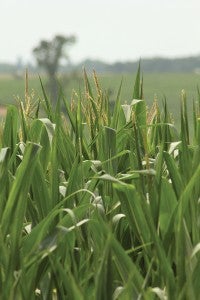Eyes to the sky
Published 10:00 am Tuesday, July 10, 2012

Brian Hanson of Grand Meadow finishes spraying a bean field east of Grand Meadow on Thursday. Because of the heat, Hanson called it quits by noon.
The heat wave is over and farmers are looking for rain as crops mature
As the heat index crept higher than 100 degrees on Thursday, Brian Hanson decided he was done spraying beans for the day.
It was way too hot, the kind of heat that caused clear skies to turn hazy-gray. And it was only noon.
“It just needs to cool off at night, and take a breather, if you will,” Hanson said.
The weather is now treating crops like it did in late July of 2011, when a string of hot days that didn’t cool off in the evenings cooked the region. Farmers worried corn would mature too fast and that ears wouldn’t completely fill.
That recent concern has been coupled with a lack of rain during the past two weeks, as well. Hanson pointed out bean leaves and corn stalks are starting to turn a lighter shade of green. Furthermore, a drought that began last April has left the region’s soil moisture depleted. For that reason, some think this year’s crops are sitting at higher risk for yield loss than last year, especially if conditions persist for another week or more. And according to the National Weather Service in La Crosse, Wis., that’s likely what will happen.
“There’s a definite worry right now,” Hanson said. “But we’re in a game where you can’t do anything about it, so why worry?”

While corn usually tassels by about July 20, early April corn has been tasseling for roughly two weeks. However, farmers are now getting desperate for rain.
Headlines around the nation scream drought in the Dakotas, Michigan, Indiana, and “the worst in 37 years,” in Kansas. Yet conditions in Minnesota are somewhat better.
“If it stays like this, it could be a disaster, but if it rains, we could still get a good crop,” Hanson said.
Don Larson of the Sargeant Grain Elevator in Sargeant, Minn., said corn in his area and farther north looks good.
“Everything I drive by every day looks really good,” Larson said. “Everything through Kasson and up by West Concord looks good at this point.”
Still, Larson realizes the need for rain.
“If it doesn’t rain, it deteriorates fast. But if we get a couple of rains in here, for the most part it should be good,” Larson said, but added rains will need to be consistent for the rest of the season.
If conditions improve, farmers should be running about 10 days ahead of schedule come harvest time.
According to the U.S. Department of Agriculture, 82 percent of Minnesota’s corn was rated in good to excellent condition last week, and 86 percent of the soybean crop was rated in fair to good condition. That’s much better than some parts of the Midwest can say.
“We’re way better than the rest of the country,” Larson said. “We’ve got nothing to complain about here in southern Minnesota.”
Furthermore, poor crops in other states are driving demand, as corn prices have risen more than $2 in a week and a half. Despite record acres of corn planted in Minnesota in 2012, there will be demand.
“We need a good crop just to fill demand,” Hanson said.
Larson said corn is back up to about $7 per bushel and is projected at that price for next summer, as well.
“I was bidding $4.68 about three weeks ago,” he said.
Bean prices are currently lingering above $15 and projected to slip, according to Farm Futures.
As always, though, Mother Nature will determine the fate of crops, and farmers know climate from year to year is showing more extremes. Larson recalls several of the past five years to be very erratic growing seasons. This year could be shaping up to be another one.



